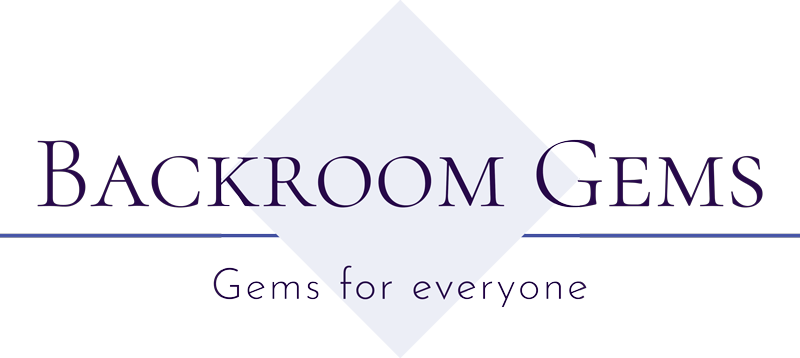How Facet-nating!
A Beginner’s Guide to the Differences Between Faceted, Cabochon, and Raw Gemstones
When looking at gemstones, there are many words that get thrown around quite a bit with little to no explanation or guidance. While this may be alright for individuals with experience and the right knowledge, not everyone is exposed to the world of gemstone specifics on a daily basis. This article is for you! Here is your guide to understanding the difference between faceted gems, cabochons, and raw pieces.
Let’s start with facets! What is a facet? By definition, a facet is an aspect, feature, or one particular side of something. In regards to gemstones, a facet is one of many flat, polished faces that can be seen on a cut gem.

For example, this champagne topaz has many facets! Most of which are smaller, geometrical shapes that surround the large face (or top of the gem). It is very common that gemstones to have facets cut into them to maximize their beauty and make their appearance more desirable by allowing them to reflect light on their surface, and refract light within. The internal light refractions are known as a gem’s “brilliance,” while the colorful play within is referred to as its “fire.” The angles used for each facet play a very important role when it comes to the final outcome of the gem

From far away they may all look very similar, but the number of facets and their angles is adjusted per the gem material and style wanted in order to maximize the gem’s potential and sparkle. If the facet angles are off, it can cause “light leakage,” where light rays are lost instead of adding to the gem’s brilliance. There are many naturally occurring gems that grow in already faceted shapes such as quartz, pyrite, and amethyst to name a few!

On the opposite end of shaping, we find cabochons. Cabochons are gems that have been shaped and polished to be domed or rounded top with a flat bottom. This was the default method of preparing gemstones prior to cutting being developed and perfected and is still used depending on the material, how it is being set, and what the gem looks like internally. If there are natural inclusions or markings, generally the piece will be cut as a cabochon to enhance its organic beauty.

The hardness of the gems is also taken into account when deciding to make it a cabochon or a faceted piece. If the gemstone has a hardness rating lower than 7 on the Mohs hardness scale, the gem may be easily scratched by some cutting or polishing materials used in faceting. This would risk making the facets unattractive or even damaging the gem. Rather than risk this, these gems are often made into cabochons, making the scratches much less evident. For example, opals are a fairly soft gem and are most often found in cabochon form. Although there are faceted opals that exist (and are gorgeous!), most jewelers will carry only set cabochons. There are some gems that wouldn’t have their name if they weren’t cut as cabochons.
Of these include the star sapphire, where the gem showcases a multiple-rayed star that moves across the dome with the light source, cat’s eye, and the famous tiger’s eye. The unique features of these stones would not have the same effect on a faceted stone, so cabochons definitely have their place in the world of gemstones.

Lastly, we have raw gemstones. These are much easier to identify as they are not cut or polished by mankind. Rather they are simply left in their natural form for us to behold. These gems have a unique corner of the market for collectors, enthusiasts, crafters, and jewelry makers, and they are thriving now more than ever!
If you are feeling confident now in knowing the difference, but don’t feel confident diving into the world of jewelry quite yet, that’s ok! There is one more, incredibly easy way to spot the difference between a faceted and a cabochon setting. A faceted gemstone will generally be found in a prong setting, while cabochons will be found in a bezel setting. There are crafters and jewelry makers that get creative in their setting styles, but this is a good rule of thumb to follow when trying to tell the difference.
You can find examples of each of these gem types in our inventory at Backroom Gems to further your journey in gemstone literacy.
